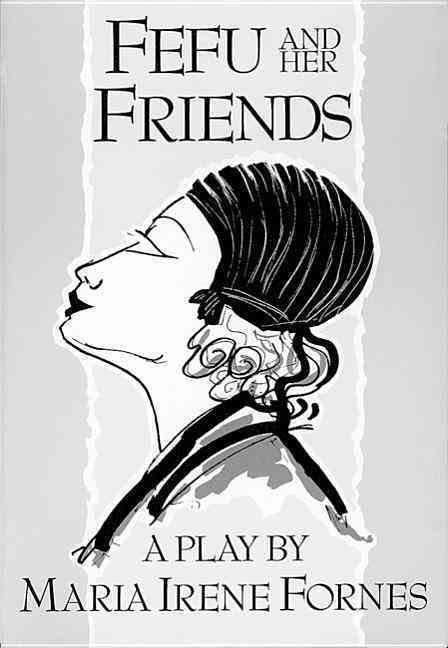First performance 5 May 1977 | ||
 | ||
Date premiered May 5, 1977 (1977-05-05) Similar María Irene Fornés plays, Dramas | ||
Fefu and her friends by maria irene fornes
Fefu and Her Friends was the fourteenth play by Cuban American playwright María Irene Fornés, originally written and produced in 1977. It is known for its alternative staging and use of a solely female cast.
Contents
- Fefu and her friends by maria irene fornes
- Fefu and her friends at glen rowan house 1
- Plot
- Characters
- Action
- Dramatic analysis
- Critical reception
- Themes and motifs
- Translations
- References
Fefu and her friends at glen rowan house 1
Plot
Fefu and her Friends is set in New England in the spring of 1935. The story takes the audience through an entire day beginning in the noon and ending in the evening; it climaxes in a murder scene.
The play is split into three parts. It begins in the living room of Fefu's country house. Part 2 is set in four different areas of the house: the lawn, the study, the bedroom, and the kitchen. Fornés deconstructs the familiar stage, removing the fourth wall, and scenes are played in multiple locations simultaneously throughout the theater. The audience is divided into groups to watch each scene, then they rotate to the next set, as the scene is repeated until each group has seen all four scenes.
Fefu and her seven female friends gather at Fefu's house to rehearse a presentation for their charity toward school education. Each character plays a role in this event. Before and after their rehearsal, the women interact with one another, and with male characters, and share their thoughts and feelings about life along with their personal struggles and societal concerns. Fornés portrays these characters as real women, in a shift in her play-writing style to realism and naturalism in settings, characters and situations.
Characters
The characters in the play are:
Action
The majority of the triggers begin with Fefu in her desire to express control over her friends. Her use of the gun and her overall organization of the rehearsal for the play places the other characters in positions of submission. Fefu has two sides according to Kelda Lynn Jordan- the controlling trait and the motherly trait. Fefu also criticizes herself and women in the play as being lesser than men, which also shows her preference for male traits. Jordan also comments on the meek stereotypical weakness of the other characters such as Paula, Sue, Christina, and Cindy. The only woman who stands against Fefu is Julia and this makes Fefu more aggressive toward her, leading her to kill the rabbit that symbolizes her loss of power and control. The actions of the play demonstrate the daily power struggles of women in a society that is dominated by men. According to Robert Wilson, Fefu and her Friends, “challenges our preconceptions of life” and that Julia’s final wound in the end is “our own.”
Dramatic analysis
Fefu and Her Friends is recognized as a feminist play for its all-female cast, central ideas of gender roles, and its bold deviations from conventional stage presentation and audience involvement. Fornés divides the stage into a kitchen, bedroom, study, and lawn, and a short scene in each area is acted out with a fourth of the audience closely viewing each part. The groups of spectators rotate until they have seen all four scenes. These individual scenes highlight conflict in all of the women's lives and thus illustrate a more communal feminist struggle than "the typical feminist approach of the early days of the second wave of the movement which emphasized the existence and the rights of the individual woman."
Fornés uses the play as representation of the struggle of women against the female stereotype. Any interactions with male characters are done offstage and no established male characters are seen to portray how women behave when not in the presence of men.
Critical reception
Jules Aaron wrote of the play, "Fefu and Her Friends challenges our preconceptions about life and the theatre through boldly drawn women, temporarily divorced from relationships, trying to sort out the ambiguities of their lives."
Themes and motifs
Kelda Jordan states that Fefu and Her Friends illustrates how most women who struggle to escape the confine of a woman's stereotypical role in society tend to believe that the only way to do so is to control her surroundings and those close to her. Women who step too far outside of the boundaries that society has set for them are considered to be overly aggressive, and take on traits that are generally considered to be those of a man, and the women who possess these traits find that they are perceived as having these traits in excess, simply because the traits are exhibited at all.
According to David Krasner, the themes of loneliness, isolation and entrapment are strongly present in the play. He says that all women have been constrained in life choices to some extent. Fefu is imprisoned in her unhappy marriage, and because she is a woman, she does not possess the power to escape it, and is beginning to slide deeper into depression. Paula recently was left by Cecilia, her lover, and Cindy broke up with a man. Julia received emotional trauma when a deer was shot, suffered convusions, and is now paralized. Julia symbolizes how the other women are trapped in their own way.
Translations
María Irene Fornés translated Fefu and Her Friends herself into Spanish. Almuth Fricke has translated the work into German.
